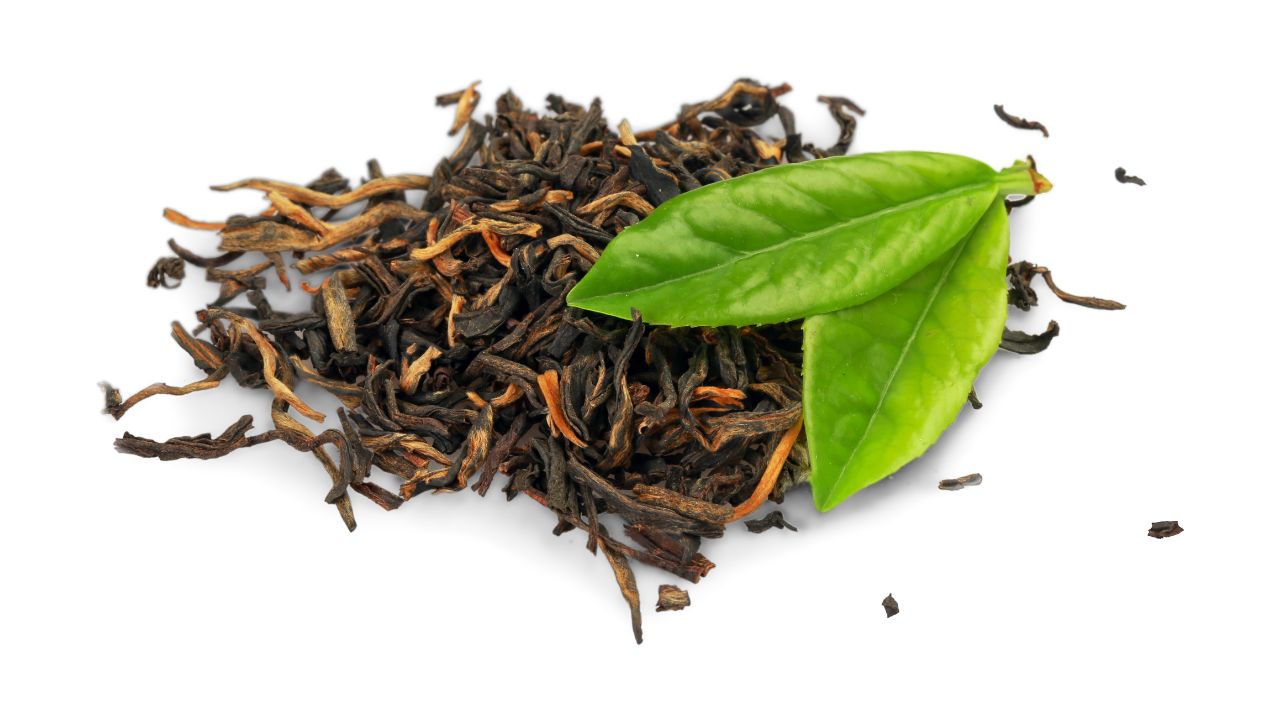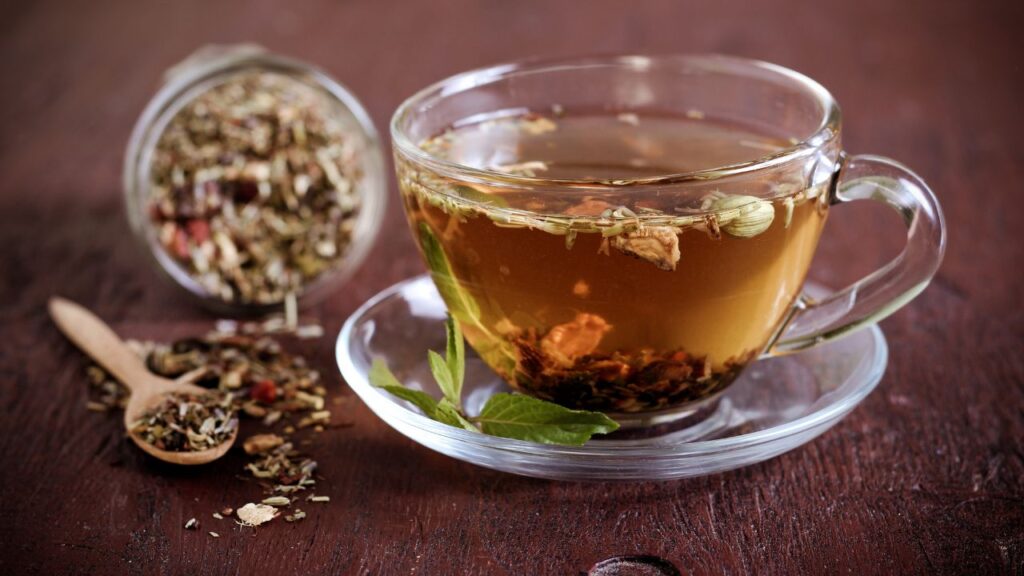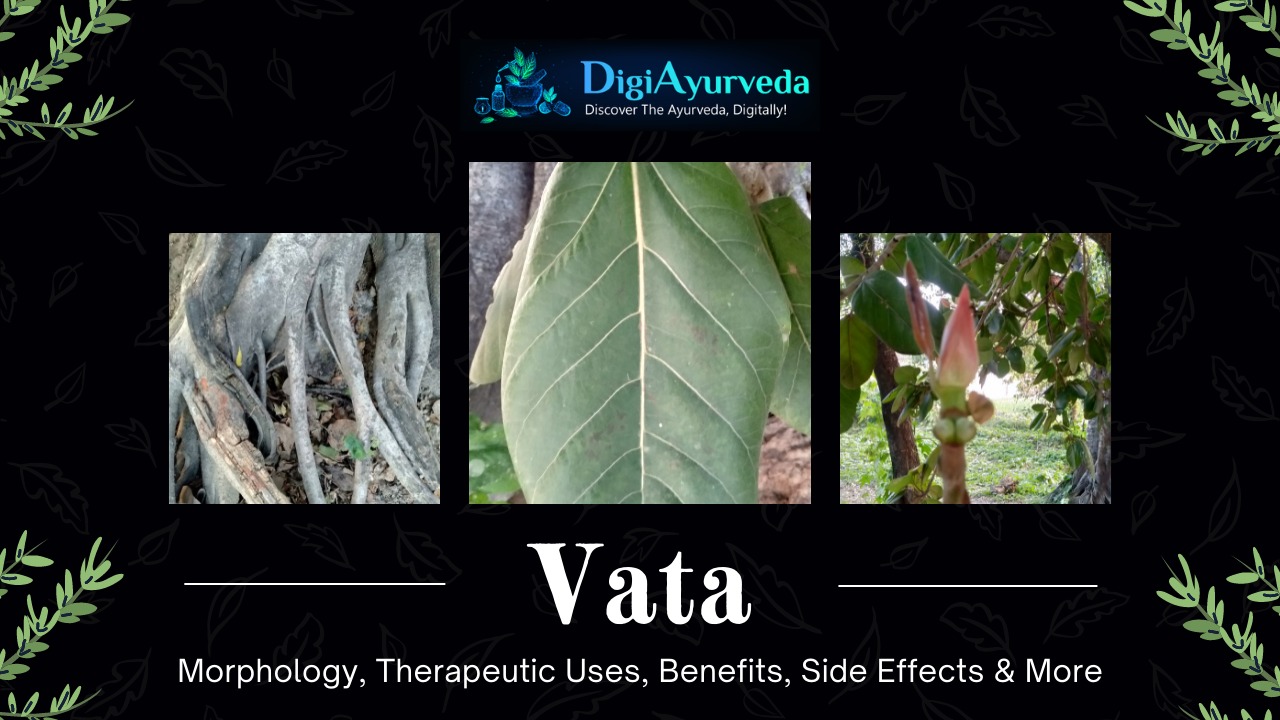
Family- Moraceae
Biological classification
- Kingdom: Plantae
- Subkingdom: Viridiplantae
- Division: Tracheophyta
- Subdivision: Spermatophytina
- Class: Magnoliopsida
- Order: Rosales
- Family: Moraceae
- Genus: Ficus L.
- Species: Ficus benghalensis L.
Introduction To Vata
Ficus benghalensis, commonly known as the banyan, banyan fig and Indian banyan, is a tree native to the Indian Subcontinent. Specimens in India are among the largest trees in the world by canopy coverage. It also known as the “strangler fig” because it starts out as epiphyte, that is, leaning on another tree that it ends up suffocating.

Habitat / place of origin
F. benghalensis is considered native to tropical Asia, from India through Myanmar, Thailand, southern China, and Malaysia.
Synonyms of Vata
Sanskrit : Bahupada, Shipharuha, Padarohini, Pada Rohi , Raktaphala, Ksheeri, Shrungi, Vanaspathi, Neela, Jataala, Mahachaya , Yakshavasaka, Yakshataru , Skandhajana, Skandhaja, Nyagrodh, Avarohi, Rohini Daanta, Kanchana, Dhruva Vaishravana Vasa, Vitapi, Mandali, Vanabhu
Assamese : Vat, Ahat, Vatgach
Bengali: Bat, Bat Briksh
English: Banyan Tree
Gujarati: Vad
Hindi: Bad, Bargad, Baragad
Kannada: Alada Mara, Aala, Vatavruksha
Kashmiri: Bad
Malyalam: Peroal
Marathi:Vad
Oriya: Bata, Bara
Punjabi: Bhod, Bhaur
Tamil : Ala
Telugu : Peddamari
Unani: Bad, Bargud
Morphology of Vata
Stem: Growing to a height of 15-20 meters and wide in radius.The tree bark is thick, whitish colored.
Aerial roots are hanging from the tree , on touching the ground, they give support to the branches.
Leaves : The leaves are thick, oval, 4-6 inches long.
Flower:. The male and female flowers are enclosed in an axillary, sessile, depressed red fruits so The flowers are not visible in the tree.
Fruit : Fruits are red and round and about 0.5 to 0.75 inch in diameter and they are spongy.
Flowering time: Summer season
Fruiting time : Summer season
Medicinal Parts
Bark, Tender leaf, Latex
Chemical Composition of Vata
- The aerial root contains Phytosterolin.
- Bark – Hypoglycemic principle, Glycoside , Bengalinoside and flavonoid glycosides, Leucocyanidin and Leucopelargonidin. Heartwood contains Liglic acid and ester of alpha- taraxasterol and
- Leaves – Triterpene, Friedelin and Beta sitosterol.
- Heart wood – Ester of – taraxasterol, Liglic acid, Bengalenoside
Ayurvedic Properties of Vata
Rasa (Taste) : Kashya
Guna (Quality) : Guru, Ruksha ,
Virya (Potency) : Shitta
Vipak (Post Digestive Effect): Katu
Karma (Pharmacological Actions)
Dosha Karma : It Is Kapha-Pitta Shamak
Sansthanik Karma (General Indications ): Vednasathapan, Varanropan, Rakt Rodhak, Shothhar, Chakushaya
Pachnasansthan (Digestive System ): Stambhan
Raktvahsansthan (Cvs): Raktshodhak, Raktapitta Har
Mutravahsansthan (Urinary System ): Mutra Sangrahani ,
Prajanana Sansthan (Reproductive System ): Garbhashaya Shothhar, Shukra Stambhan
Tapkarma: Dahaparshaman
Qualities/Effects on Tridosha of Vata
It reduces the kapha by katu ruksha and pitta dosha by shitta viraya.
Formulations of Vata
- Paranthyadi taila
- Swarna sindhura
- Ushirasava
- Nyagrodhadi kashayam
Therapeutic Uses of Vata
- Vrana
- Visarpa
- Trushna
- Chardi
- Murcha
- Raktapitta
- Daha
- Moha
- Shopha
Dosage
- Powder- 1 to 3 g
- Decoction- 50 to 80 ml
- Milky latex- 5 to 8 drops
How can you consume Vata?
Decoction of the bark, milky latex of Vata, cold infusion.
Benefits of Vata
- Fainting
- Loss of consciousness
- It can be administered both externally and orally in ulcers and wounds.
- Herpes
- Vomiting
- Excessive thirst
- Delusion
- Used burning sensation in gastritis, neuropathy, burning sensation in eyes.
- It used in bleeding disorders such as nasal bleeding, heavy periods.
- Used both for oral and external wash
- Inflammation
- It gives instant relief from wound and swelling if applied directly on the skin.
- Treat vaginal diseases
- To control diabetes,
- Strengthen the uterine muscles during pregnancy.
- . It is used in treatment of premature ejaculation.
- Applied locally in dental caries
- Conjunctivitis
- Skin diseases as part of treatment
- Treat firmness of the breasts in females
- Treat diarrhea
- Treat nausea and vomiting.
- Viper snake poisoning
- Used in excessive sweating
Side Effects of Vata
Generally, it has no adverse effect reported after the normal use of Vata
Safety Precautions
It is should avoid during constipation




